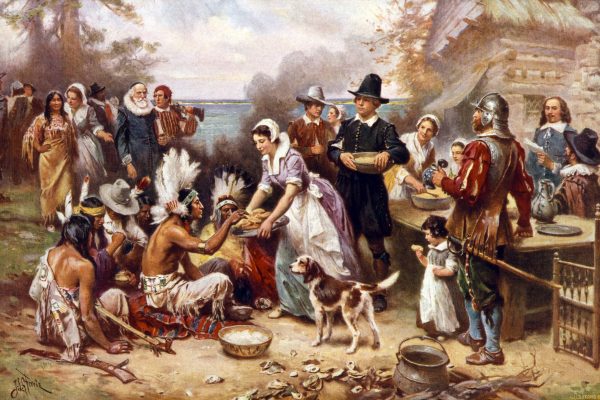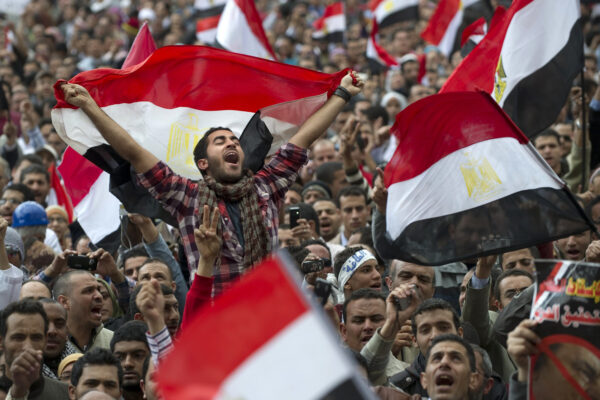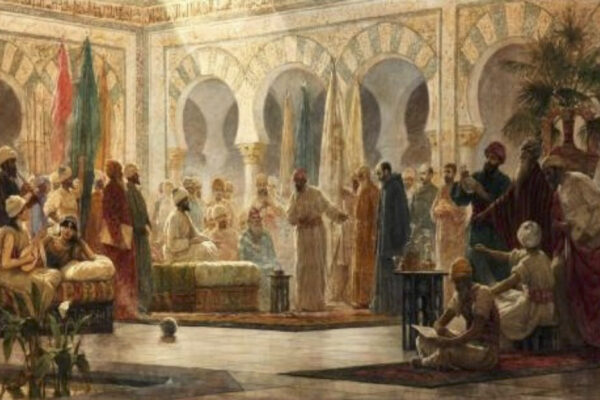The Mughal Empire is remembered for many things, but its contribution to literature – especially in Persian, Urdu, and Turkish – are often overlooked. Here’s everything you need to know about literature during the Mughal Empire!
The Mughal Empire is remembered for many things, but its contribution to literature – especially in Persian, Urdu, and Turkish – are often overlooked. Here’s everything you need to know about literature during the Mughal Empire!
Mughal rulers held domination over the Indian subcontinent for an extensive period, and their reign left an indelible mark through their contributions to art, architecture, and literature. The historical monuments that stand proudly in India today serve as enduring reminders of the Mughal legacy.
While the Mughal period is widely recognized for architectural prowess, its significant contributions to literature are often overlooked. This study aims to shed light on the Mughal’s contributions to the literature.
The Mughal rulers patronized arts and literature, displaying a keen interest in languages such as Persian and Urdu. Translations works were undertaken between Sanskrit, Persian, and Turkish. The golden period of Urdu poetry was the 18th and 19th centuries, which marked one of the greatest contributions by Mughals to Urdu literature as they paved the way for its flourishment.
Numerous literary works were composed in Persian during the Mughal period as well, as it served as the language of administration. Persian gained prominence in northern India, where the Mughal capital was situated, and it became the preferred means of communication for the elite ruling. Akbar, in particular, shifted from using local languages for income records to employing Persian, which contributed to its widespread usage in Mughal India.
Multiple factors contributed to the flourishing of literature during the Mughal era. The growth of regional languages, such as Hindi and Gujarati, was largely propelled by the Sufi and Bhakti movements. Sufi and Bhakti saints utilized local languages to preach and communicate with the masses, leading to the development and widespread usage of regional languages throughout India.
It is worth noting that even Babur, the founder of the Mughal dynasty, was a talented poet and author. His memoir, known as the “Baburnama,” gained considerable acclaim among renowned scholars. Initially written in Turkish, it was later translated into various languages.
Literature of the Reign of Babur and Humayun
Babur, the founder of the Mughal dynasty, had a profound interest in literary works – he wrote Tuzuk-i-Baburi in Turkish, and the text was so well written as it was translated into Persian on three occasions. Babar wrote poetry in Turkish and Persian, and his collection of poems Divan (Turkish) became well known.
Following Babur’s reign, his son Humayun assumed the throne. Humayun’s sister, Gulbadan Begum, authored the Humayunama, a historical account of Humayun’s life and reign. Additionally, Humayun established a vast library known for its extensive collection. Tragically, Humayun met his demise after falling down the stairs of the library.
Literature in the Kingdom of Akbar
Akbar, the Mughal emperor, held a deep appreciation for art and literature, amassing a vast library containing over 24,000 manuscripts. He actively supported and patronized numerous scholars, writers, and poets, leading to the flourishing of new literary works during his reign.
Scholars such as Abul Fazal, Faizi, Nizamuddin Ahmed, and Abbas Khan emerged during this period and produced significant contributions to literature. Many historical works were commissioned and completed under Akbar’s rule.
Abul Fazal bin Mubarak, one of the “Navaratnam” or the nine jewels in Akbar’s royal court, wrote the Akbarnama, a comprehensive account of Akbar’s reign. Another disciple of Abul Fazal, Abdul Hamid Lahore, authored the Padshahnama, which chronicles the history of Shah Jahan’s reign.
Akbar is also renowned for his thirst for knowledge and his translations of various Sanskrit works into Persian. For instance, the Mahabharata was translated as the “Razimnama” narrating the ancient battle between the Kauravas and the Pandavas. Faizi translated the “Bhagavad Gita” from Sanskrit to Persian. Akbar also facilitated translations of other Sanskrit works, including the Mahabharata, Ramayana, and Upanishad, Sanghasan Batisi, and Hayat al-Haiwan.
In the history of India, Ada Akbari is referred to in many ways as one of the most important periods. He extensively supported the sciences and arts for his successors and established the traditions that gave birth to the Mughal culture and civilization.
Scholars such as Abdul Qadir Badayuni, Faizi, Abul Fazal, and Nizamuddin lived in Akbar’s court. This king’s reign was the period of development of Persian literature in India, but he also worked for the development of Sanskrit during this period. In ‘Ain Akbari’ we find names of fifty-nine poets of Akbar’s royal court, besides them, there were Sanskrit scholars, and many scholars were proficient in both Persian and Sanskrit.
There was also Khankhanan, who is considered one of the great Hindi poets. Famous Hindi poets Raja Birbal, Man Singh, and Bhagwan Das, were associated with Akbar’s court as well. Tulsidas and Surdas were two Mughal-era scholars who became immortal in the history of Hindi literature with their works.
Finally, the Sanskrit-Persian dictionary was composed under the title of “Parsi Parkash” during Akbar’s reign.
Literature in the Region of Jahangir
Jahangir was interested in art and architecture and wrote his autobiography as “Tuzuk-i-Jahangiri” or “Jahangirnama” like his grandfather Babur. Iqbalnama-i-Jahangiri was a very important literary and historical work during his reign, and carried on the legacy of his family in supporting literacy and literature.
Literature in Shah Jahan and Aurangzeb’s Reign
Shah Jahan’s son Dara Shikoh wrote about Sufism in his major article Majma-ul-Bahrain, or The Confluence of the Two Seas, in which he talked about the diversity of religions and the harmony of Islam, Hinduism, and other religions. The translation of Bhagwat Gita and Upanishad into the Persian language was also done by Dara Shikoh.
The most significant historical work in his kingdom was “Padshahnama”, a history of his kingdom written by Abdul Hamid.
During the rule of Aurangzeb, a notable literary work was the “Fatwah-e-Alamgiri,” a compilation of Islamic law. This work carries immense significance in the realm of jurisprudence. Other writings from that era include, “Nuskho-i-Dilkusha” by Bhimsen, “Alamgirnama” by Muhammad Kazim bin Muhammad Amin, and “Muntakhab-ul-lubab” by Kafi Khan.
Translated Literature
Many Sanskrit works were also translated into Persian; two of those major Sanskrit epics were the Mahabharata and Ramayana.
Another well-known writer from this time is Jagannatha Panditaraja, a famous Telugu poet and literary critic, who is known for works like Rasa Gangadharam, Ganga Lahari, and more.
Regional Literature
Regional languages such as Bengali, Gujarati, Oriya, and Rajasthani also climbed the ladder of development during this era with translations.
One such example of this development was the translation of stories from the Bhagavad Gita into regional languages. Urdu became the lingua franca for people with different dialects to communicate with each other. Additionally, the general masses also contributed to uplifting regional languages. These changes in literature raised common languages into prevalent literary languages.
Hindi Literature
Hindi poets held a prominent position and were well-regarded in the Mughal courts. Among them, Tulsidas stood out as the most renowned Hindi poet. His notable works were composed in both Sanskrit and Awadhi languages.
Surdas was another writer, who was a prominent figure in Akbar’s royal court and known as the “blind bard of Agra”. During the reign of Shah Jahan, Sundar Kaviray wrote “Under Shringar”.
Promotion of Urdu During the Mughal Era
Mughals, especially the later kings, played one of the most vital roles in the development and evolution of the Urdu language. They patronized literary men and created an enabling environment for the development of Urdu.
The origin of the term “Urdu” is often associated with its emergence in the army camps of Delhi, where soldiers from various regions of Hindustan communicated using a language that borrowed words from different languages.
The emergence of Urdu as a major form of literature during the Mughals is from two significant factors: the use of Urdu as a medium for communication and the content of the literature. The Urdu language is majorly influenced by the Persian and Arabic language.
Mughal king Muhammad Shah was famous for his fondness and interest in the promotion of Urdu. He invited and awarded the famous Urdu poet Shamsuddin Wali for his contribution to Urdu poetry. Similarly, the last Mughal Bahadur Shah Zafar was himself a poet and arranged literary events at his court.
The Urdu language received importance as Mughal kings made it their court language. Mughal empires like Muhammad Shah and Bahadur Shah Zafar patronized literary works, calligraphy, and mushairas at the palaces. in addition, famous poets of the Mughal period with a profound impact on the development of the evolution of Urdu were Mir Taqi Mir, Sauda, and Mirza Ghalib.
Conclusion
During the reign of the Mughals, literature experienced significant advancements, witnessing the creation of numerous original and translated works. Persian remained a prominent language, but literature in Sanskrit, Hindi, Urdu, and other regional languages also flourished.
This era witnessed the elevation of various languages through the production of new literary works and the introduction of innovative techniques. The patronage of Mughal kings, princes, writers, and common people played a pivotal role in fostering this literary progress. The rich collection of literary compositions created during this period laid a strong foundation for future writers, still seen today.
References
Laal, Waaz Author, The History of the Urdu Language, Mujtabai Press, Delhi.
Suhasinisinha, Literature During the Mughal Empire, (found here).
Anu Kumar, How Akbar came to love books though he never learnt to read, scroll.in, (found here).
Sheikh Muhammad Ikram, Rood E Kausar, p. 164, (found here).
Muhammad Mubarak Hussain, The situation of sciences, arts and civilization and culture in Ada Akbar, (found here).
Ram Prasad Tripathi, Rise and Fall of the Mughal Empire, Central Book Depot, Allahabad.
Shamsul Ulama Moulvi Zakaullah, Aurangzeb Alamgeer, Farid Book Depot, New Delhi.
Saif Mahmood, Mughal Delhi’s Romance With Urdu Poetry.
Fritz Lehmann, Urdu Literature and Mughal Decline, Asian Studies Center, Michigan State University.





